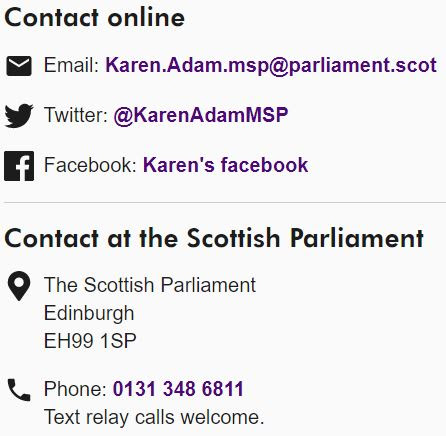 Householders wishing to install energy generating equipment, including solar panels, will no longer require planning permission under proposals announced today.
Householders wishing to install energy generating equipment, including solar panels, will no longer require planning permission under proposals announced today.A consultation has been launched on planning reforms aimed at increasing renewable energy generation and cutting emissions.
Most householders currently wishing to install solar panels, heat pumps or wind turbines on existing buildings must apply to the local planning authority for consent.
However, under the proposals, permission may be granted automatically under Permitted Development rights, provided that strict criteria are met.
Mr Stevenson said:
"We recently announced our intention to introduce a statutory target to reduce Scottish emissions by 80 per cent by 2050, as part of our proposals for Scotland's first Climate Change Bill.
"Everyone has a part to play and the Scottish Government is providing strong leadership by reforming the planning system to encourage greater use of microgeneration equipment. This signals Scotland's serious intent to lead the global effort to tackle climate change.
"The cost and time required to get planning consent can often be a disincentive to householders seeking to install microgeneration technologies.
"We are seeking to strike the right balance between planning considerations and the wider environmental benefits of reducing carbon emissions.
"Low carbon technologies in our renewable energy mix, including microgeneration and combined heat and power, will make a significant contribution to Scotland's future prosperity and help build increased, sustainable economic growth."
Mr Stevenson launched the consultation at the home of Edinburgh resident Dora Elliot, who required planning consent to install Solar PV (photovoltaic) on her own home. Solar PV uses energy from the sun to create electricity to run appliances and lighting.
Mrs Elliot has since reduced her electricity consumption by around 50 per cent. On average, installation of Solar PV can save householders around £170 each year.
Mike Thornton, Director Scotland of the Energy Saving Trust, said:
"The Energy Saving Trust supports the installation of microrenewables and would welcome a relaxation of the planning regulations to make it easier for householders to install microrenewables and thereby help people to do their bit to reduce their own carbon footprint."
The consultation runs for 10 weeks.
A permitted development (PD) is one where planning permission is granted as a right and there is no need to apply to the planning authority for consent. Where PD does not apply, applicants would have to seek planning consent under the normal procedures.
The consultation proposes that solar panels on normal domestic buildings would be allowed under PD if it was installed on a pitched roof or a wall, covered up to 60 per cent of the area and protruded less than 150mm above the roof/wall. PD would not apply to the walls of buildings containing flats. PD would apply to flat roofs if less than 1m high, covering less than 60 per cent of the roof and set back 1m from the roof edge. Additional safeguards would apply in conservation areas or world heritage sites where they would not be PD on a principal elevation fronting a road.
Stand-alone solar panels would be permitted if less than 4m in height, at least 5m to any boundary and a maximum area of 9m square. They would not be permitted within the curtilage of listed buildings. Additional safeguards would apply in conservation areas or world heritage sites where they would not be PD if facing onto or be visible from a road.
Ground source heat pumps and water source heat pumps would be permitted in all areas.
Wind turbines on domestic buildings would not be permitted in conservation areas or world heritage sites. Elsewhere they would not be permitted under PD if more than 3m above the top of the roof and with a blade length of 1.2 metres. The consultation also seeks views on what distance criteria should be set to safeguard near-by property against noise, proposing 100m as a basis for consultation. Free standing turbines would be similarly limited, with overall height limited to 11.1 metres and at least 12 metres from the boundary.
Flues for bio mass boilers/stoves would be permitted development except in a conservation area or world heritage site if they were visible from a road.
The Scottish Community and Householder Renewables Initiative was launched in 2003. It provides advice, grants and support to those wishing to install microrenewable technologies such as solar power, heat pumps, biomass, micro wind and micro hydro. More than 2,000 grants have been awarded to householders since the scheme was launched. The most popular technologies are those used to provide heat. More information is available from the Energy Saving Trust website.


 Born in 1946 and brought up in Cupar, Fife, I was educated at the local school -
Born in 1946 and brought up in Cupar, Fife, I was educated at the local school - 
















